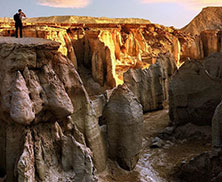-
Hotel Booking
-
- Mashhad hotels
- Tehran hotels
- Isfahan hotels
- Kish island hotels
- Tabriz hotels
- Qeshm island hotels
- Shiraz hotels
-
Mashhad hotels :
-
Sort by Price
-
Sort by Place
-

-
Tehran hotels :
-
Sort by Price
-
Sort by Place
-

-
Isfahan hotels :
-
Sort by Price
-
Sort by Place
-

-
Kish island hotels :
-
Sort by Price
-
Sort by Place
-

-
Tabriz hotels :
-
Sort by Price
-
Sort by Place
-

-
Qeshm island hotels :
-
Sort by Price
-
Sort by Place
-

-
Shiraz hotels :
-
Sort by Price
-
Sort by Place
-

ProfileMessagesSettingsSettingsSettingsSettings
-
- Cities
- Blog
- Discounts

Jame Mosque
Located in the historical center of Isfahan, the Congregational Mosque (Jame Mosque) can be seen as a stunning illustration of the evolution of mosque architecture over twelve centuries.
The monument illustrates a sequence of architectural construction and decorative styles of different periods in Iranian Islamic architecture from around 771 to the end of the 20th century. As a result it has rooms, built in different architectural styles, representing a condensed history of the Iranian Architecture leading to the Grand Bazaar of Isfahan through its southeast wing.
Registered by UNESCO as a World Heritage Site, this grand mosque is one of the oldest mosques still standing in Iran, built in the four-iwan (a vaulted open room) architectural style for the first time in Islamic building, placing four gates face to face while the iwans are connected by two-story arcades ornamented by glorious tiles.
Following its Seljuq expansion and the characteristic introduction of the four iwans around the courtyard as well as two extraordinary domes, the mosque became the prototype of a distinctive Islamic architectural style in terms of mosque design, layout and dome construction, which was referenced in several later eras and regions of the Islamic world.
Having one of the largest courtyards in Iran, the mosque has a double-shelled ribbed dome flanked by hypostyle prayer-halls on two sides, representing an architectural innovation that inspired builders throughout the region.
Of the two pools in the courtyard, one is covered by a structure reminding the holy Kabeh in Mecca once used for practicing the Hajj rites by Muslims.
The mosque also features a wonderful museum of Iranian and Islamic calligraphy with different kinds of calligraphy in interior parts of the western iwan along with the Oljeitu Mehrab (prayer niche), the epitome of an excellent stucco calligraphy dating back to 1310.
Spending at least half a day to see different parts of the mosque, visitors can have an in-depth glance on the step-by-step development of Iranian and Islamic art and architecture in this oldest preserved edifice of its type in Iran, making the trip memoirs even more pleasant and informative.


